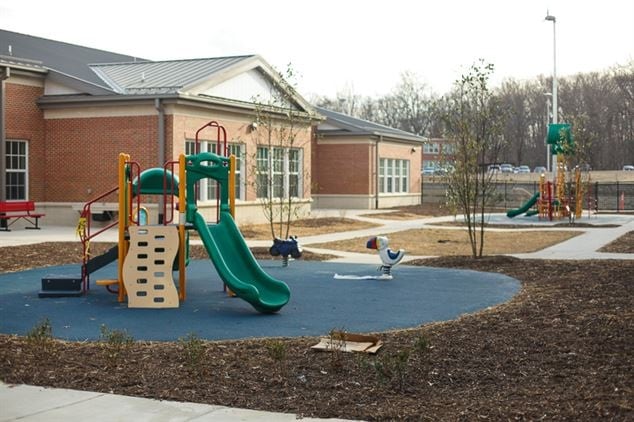The Trump administration is considering a plan to end the military’s longtime operation of schools for military children on dozens of stateside military bases, part of a broader push to cut costs and reduce the size of the federal workforce, according to information obtained by Military Times.
The military currently operates 47 schools on military installations in seven states in the continental U.S., serving a total of about 20,000 students. The proposal, which has support from some parts of the Pentagon, would turn over operation of those schools to local school districts.
The proposed “divestiture” of Defense Department stateside schools would not impact the Defense Department-run schools overseas, according to officials familiar with the proposal but who were not authorized to speak publicly about the matter.
The change would be implemented in phases, according to a source familiar with the plan, and officials would first test the idea at Marine Corps Base Quantico, Virginia, which has an elementary school and a middle/high school on the installation, with a total enrollment of about 1,000 children.
Then officials would “employ the lessons learned” and turn over the remaining schools in the continental U.S.. The 2017 Defense Department budget included about $600 million to operate Department of Defense Education Activity schools on 15 installations in the U.S., but that also includes five schools in Cuba and Puerto Rico, which would presumably not be affected by the closures currently under discussion.
“This could cause an uproar in the affected communities, and understandably so,” said Eileen Huck, deputy government relations director for the National Military Family Association. “Military families take their kids’ education very seriously. The DoDEA schools are an important part of the communities where they are operating.
“Kids’ education isn’t something that we should be nickel-and-diming or playing games with,” she said. “This is something that should be taken very seriously and not just undertaken as another element of a business case analysis.”
This proposal to stop running schools on military bases is among the reform initiatives that are the result of the Trump Administration’s direction to government agencies in April to develop a plan for reforming the government and reducing the federal workforce. The Pentagon drew up a slate of proposals, including the DoD school proposal, and sent that back to the White House’s Office of Budget and Management in September, according to a defense official.
The Pentagon’s deputy chief management officer has led the DoD’s reform effort. Earlier this year, reform teams conducted analyses on a number of proposals that were submitted in June to develop implementation plans and provide estimates of the potential cost savings.
No estimates were provided for transferring the stateside DoD schools to local school districts.
Previous studies on the feasibility of transferring DoD schools to local schools have found that there is a cost required to do so. This reform plan suggests shifting the money used to operate stateside DoD schools to support local school districts. It notes that the plan would also affect approximately 36,000 employees employed by or in support of stateside DoD schools.
Historically, military families and commanders have been supportive of these schools on U.S. bases which are concentrated in the South, and have even asked for more DoD schools in some locations, citing their high level of quality compared to the local public schools adjacent to some military installations.
Others, however, criticize the schools as private academies for the privileged few who live on certain installations or an anachronism dating back to the segregation era, when local school districts would not accept minority children.
There have been four studies considering alternatives to DoD schools on these military bases. The latest, conducted by RAND and published in 2016, found that federal costs for educating military-connected children at these bases would eventually be lower under the options considered, and DoD costs could be reduced – but states and local school districts would be required to provide “significant funding” if they were to take responsibility for military children’s education.
The adjacent school districts tend to be low-performing, the RAND researchers reported, “and although military-connected students have favorable characteristics that might help them perform better than these [local education agency] averages, there is a concern that current [students in stateside DoD schools] would experience lower quality if the adjacent LEAS provide their education either under contract or by transfer of responsibility.”
Karen has covered military families, quality of life and consumer issues for Military Times for more than 30 years, and is co-author of a chapter on media coverage of military families in the book "A Battle Plan for Supporting Military Families." She previously worked for newspapers in Guam, Norfolk, Jacksonville, Fla., and Athens, Ga.




